Discover the canelé (or cannelé), a traditional French pastry from Bordeaux with a soft custard center flavored with vanilla and rum, and a crispy caramelized crust.
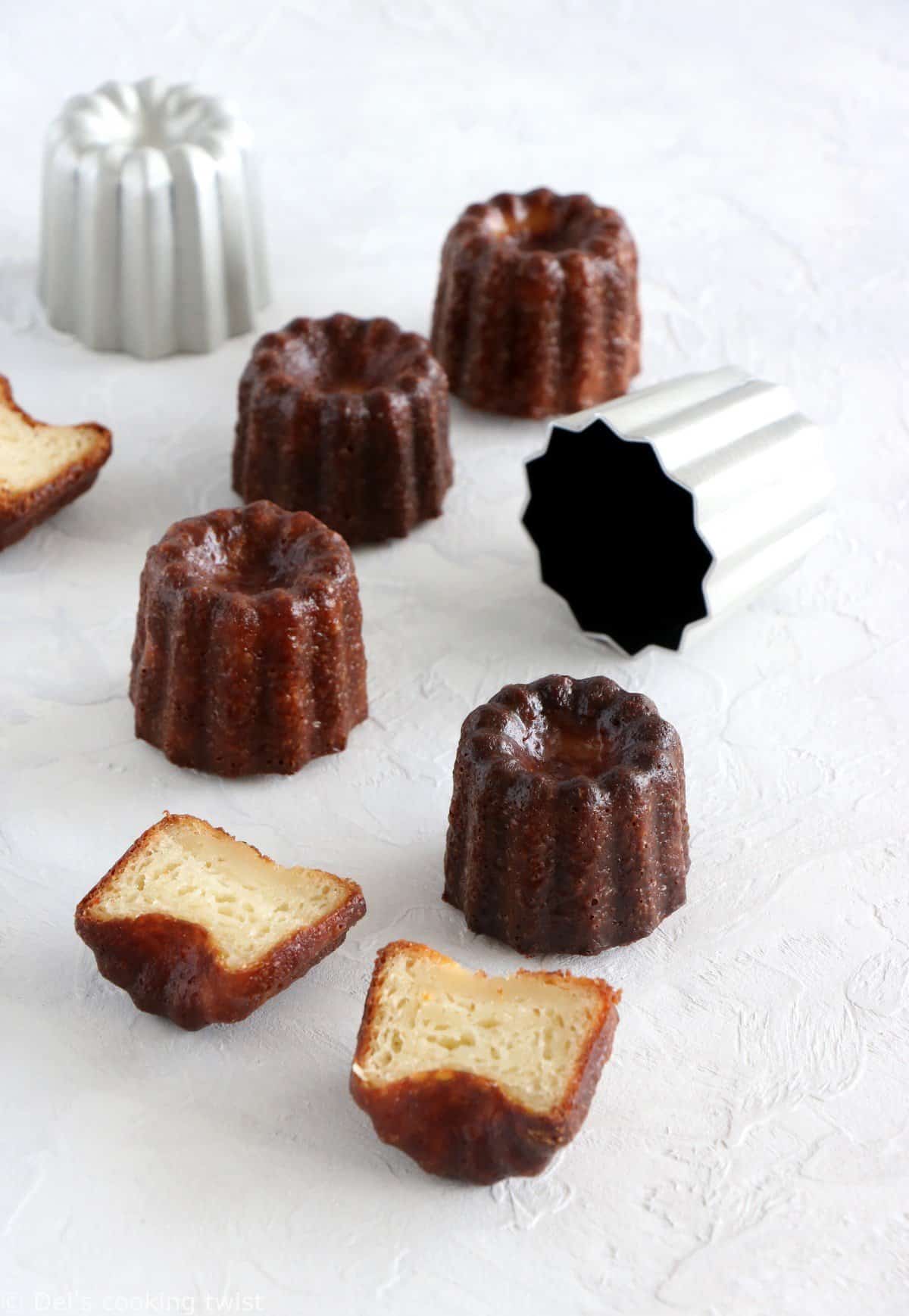
Email me this recipe
We’ll send it straight to your inbox, along with weekly food inspiration!
At first they can seem a little bit challenging: how will I manage such a beautiful result? A perfect cylindrical shape with a delicious creamy texture inside and a crispy one (not burned!) outside? I know people who made them inaccessible, creating a whole rumor around them and arguing they know the recipe better than everyone else. The true is elsewhere: a canelé is an easy little pastry you can bake at home too with simple and basic ingredients, no need to go to the most expensive bakery.
Before I go further and share with you my best tips, let’s sit for a minute and discuss together about these adorable little pastries. My first question will be the following: have you heard of canelés before? And then the second one: do you know where they come from and what is their origin?
Canelé (or cannelé , pronounced [kan.le] in French) is to be originated from the Couvent des Annonciades, Bordeaux in the southwestern France, where in the 18th century, the nuns would have been specialized in the making of candies or sweet treats using molds in the shape of tubes. This tube shape is characterized by the word “cannelé” in French, which will later on give the name of this little pastry.
We also find mentions of a similar pastry under the name of “canaule” around Limoges in France (not too far from Bordeaux), which makes the origin of canelé still disputed today. Whether the convent origin was a legend or not, the modern name of “canelé” is however of recent origin. With the addition of rum and vanilla to the original recipe, the little pastry’s popularity began to explode in the late 20th century and many manufacturers around Bordeaux started to bake them.
You might be a little bit confused by the name itself, some writing “cannelé” with 2 “n” while others writing it “canelé” with 1 “n” only. If you want to know the explanation, please don’t be drunk when reading the following, as the truth is still uncertain. In 1985, when the Brotherhood of the Canelé of Bordeaux (Confrérie du Canelé de Bordeaux) was created, the decision was made to remove the second “n”, making the “canelé” a collective brand registered at the National Institute of Industrial Property of France by the Brotherhood. However, most of the famous pastry chefs (Ladurée, Pierre Hermé…) still spell it as “cannelé of Bordeaux” with double ‘n’. So today we find commun usages of both “canelé” and “cannelés”. So confusing!
Luckily, the recipe is much less effort than it is to understand the legend or the semantic around this little French pastry. As I said before, it is made with very basic and simple ingredients. The batter is very liquid and alike a crepes batter. I prefer using whole milk, but semi-skimmed milk will work too (avoid skimmed milk however). Then it is really important to use vanilla of good quality and as much as possible use a real vanilla pod with the seeds it contains rather than vanilla sugar or vanilla extract. A vanilla bean can be a little bit pricey but the result is worth it.
When it comes to sugar, you will notice that the recipe calls for quite a huge quantity of it. I take my recipe from my sister in law (hi there! 🙂 ) who bake canelés regularly and offered me some canelé forms when she visited me in Chicago last year, and I listened to her tips and recipe adjustments religiously before getting my hand on the recipe. As it turns out, her last version was absolutely perfect. Coming back to the sugar, she tried a few attempts using less sugar and it resulted in a much less caramelized crust. So no secret for this specific recipe: you are gotta use sugar. You will eat a salad next time!
I didn’t list all the ingredients but clearly they are the same basic ones you would use for a crepes recipe. But there is one optional ingredient in crepes that is mandatory here: the use of rum. Whether white or aged, it doesn’t really matter as it will be used in a baking good. However, it will enhance the vanilla flavors of this little pastry and vice and versa. So don’t forget it, at least for a traditional recipe. Then, the canelé is a really easy recipe to adapt and you can use other flavors or spices: brewed coffee, orange flower water instead of vanilla, saffron… Be creative!
Now what makes the canelés a little bit intimidating is not the dough but the canelé molds. Traditionally, the canelé is baked in a small cylindrical fluted copper mold. Using this kind of mold, you are guaranteed to get the perfect result in terms of texture. However, copper molds are a bit pricey, hence I wouldn’t necessarily recommend purchasing them for occasional baking only. I used aluminium non-stick canelé molds for the bigger ones that give this lovely shape you see on the pictures, or a simple non-stick silicone baking mold for the mini ones. The silicone mold make them a little bit less dark and crispy in the outside, but it remains a great affordable option to make your own canelés.
You will notice that there are traditionally two main sizes: large canelés and mini ones. I still like the bigger one a lot as you can really taste the contrast in textures between the soft, creamy inside and the crispy outside. The little ones are however perfect for a café gourmand, a French concept of enjoying a coffee after your meal, served with mini pastries, among which mini canelés are a perfect match. It is now time for the recipe; look how easy!
Canelés de Bordeaux
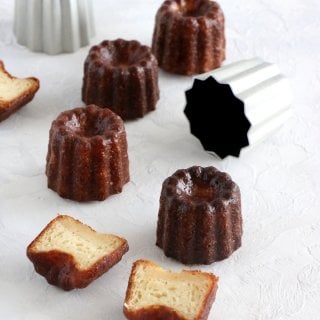
- Prep Time: 10 mins
- Cook Time: 1 hour
- Total Time: 1 hour 10 mins
- Yield: 20 large (or 40 mini) canelés 1x
- Category: Desserts
- Cuisine: French recipes
Discover the canelé, a traditional French pastry from Bordeaux with a soft custard center flavored with vanilla and rum, and a crispy caramelized crust.
Email me this recipe
We’ll send it straight to your inbox, along with weekly food inspiration!
Ingredients
- 2 cups (50 cl) whole milk
- 1 vanilla pod, seeds + pod
- 3 Tablespoons rum
- 2 Tablesoons (25g) unsalted butter
- 2 large eggs + 2 yolks
- 1 cup + 1 Tablespoon (130g) all-purpose flour
- 1 1/4 cups (250g) sugar
- 1 Tablespoon butter, melted (for coating the molds)
Instructions
- In a medium saucepan, bring milk, vanilla pod and seeds, rum and butter to a boil.
- Meanwhile, whisk the eggs (2 plain + 2 yolks). Pour in the flour, sugar, and stir well with a rubber spatula until well combined.
- Remove the vanilla pod from the milk, then pour the milk, little at a time, to the egg mixture, stirring well between each increment. In the end, you must have a liquid batter looking like a crepes batter.
- Cover and let sit in the refrigerator for 24 hours or at least overnight.
- Preheat the oven to 480°F (250°C) and grease the canelé molds generously with melted butter.
- Remove the batter from the refrigerator and fill in the canelés forms up to 3/4. Bake for 10 minutes at 480 F (250°C) and 50 minutes at 350 F (180°C).
- Unmold the canelés and let cool completely.
Notes
NOTE: this recipe makes 20 large canelés or 40 mini canelés.
* Try to remove the batter from the refrigerator just before pouring into the molds. The contrast between the very hot temperature of the oven and the very cold batter will help create the caramelized crispy crust and dark color you are aiming for.
Did you make this recipe?
Lastly, if you make this Canelés de Bordeaux, be sure to leave a comment and give this recipe a rating, letting me know how you liked it. And of course, don’t forget to tag me on Instagram! Thank you and enjoy!
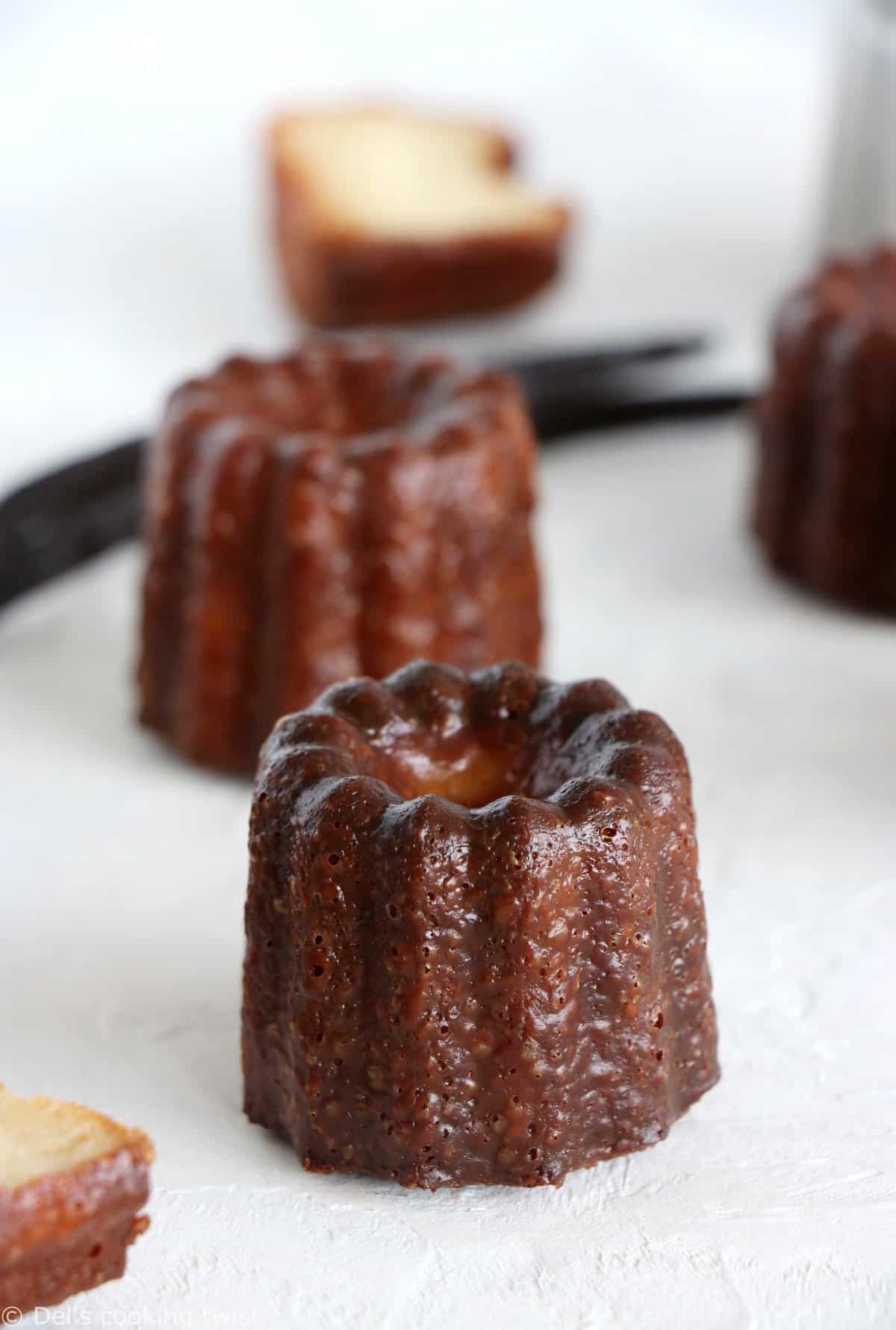
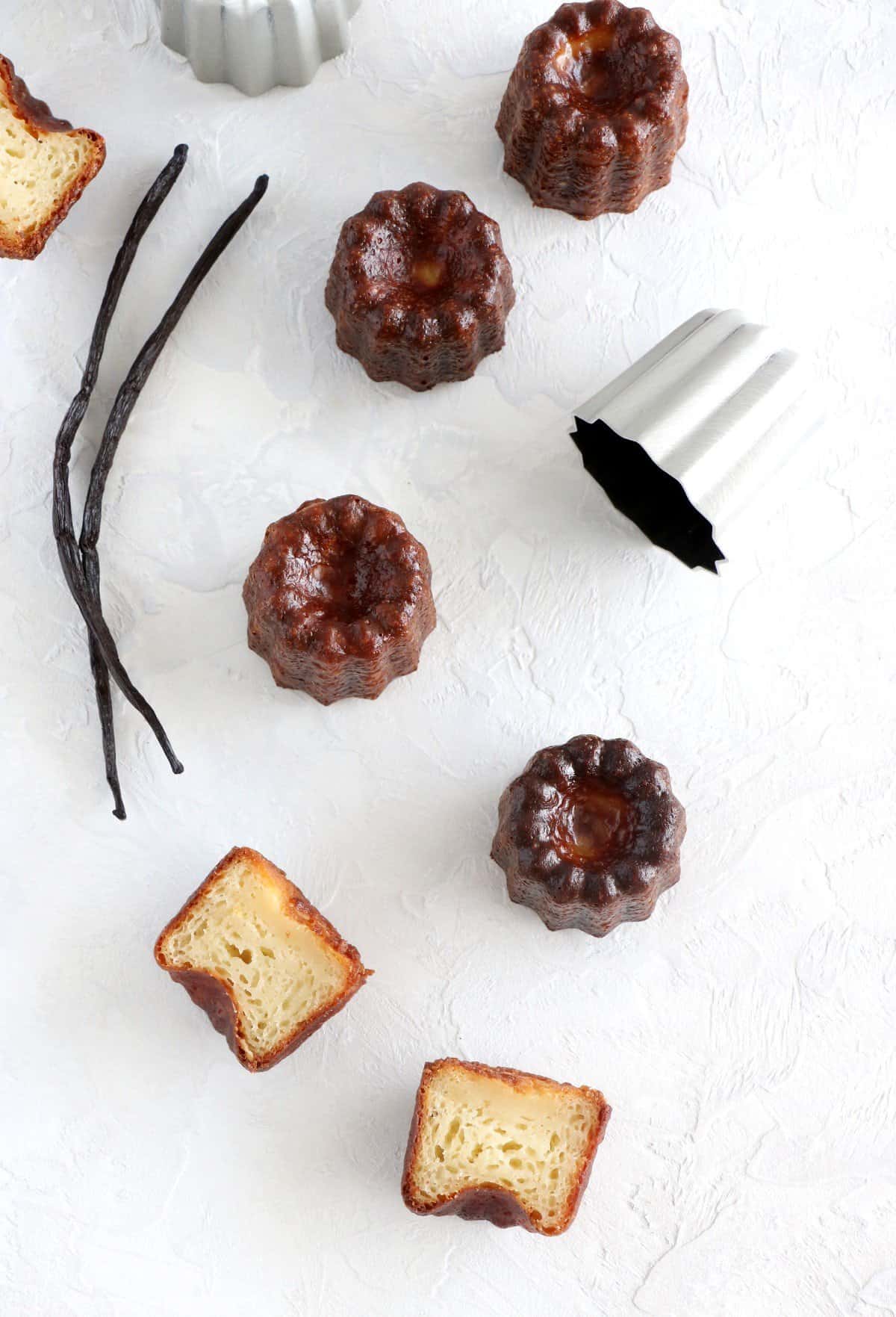
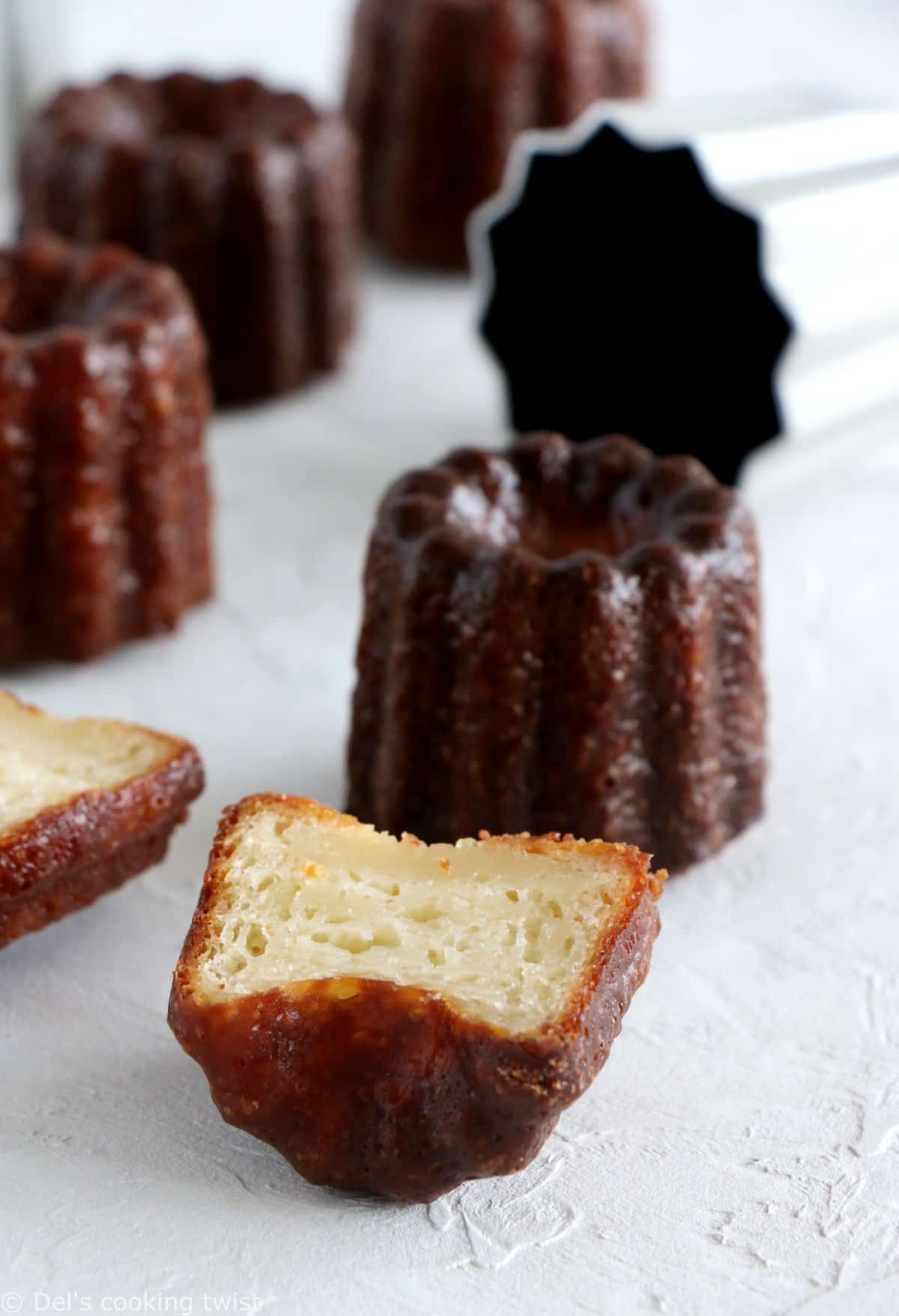
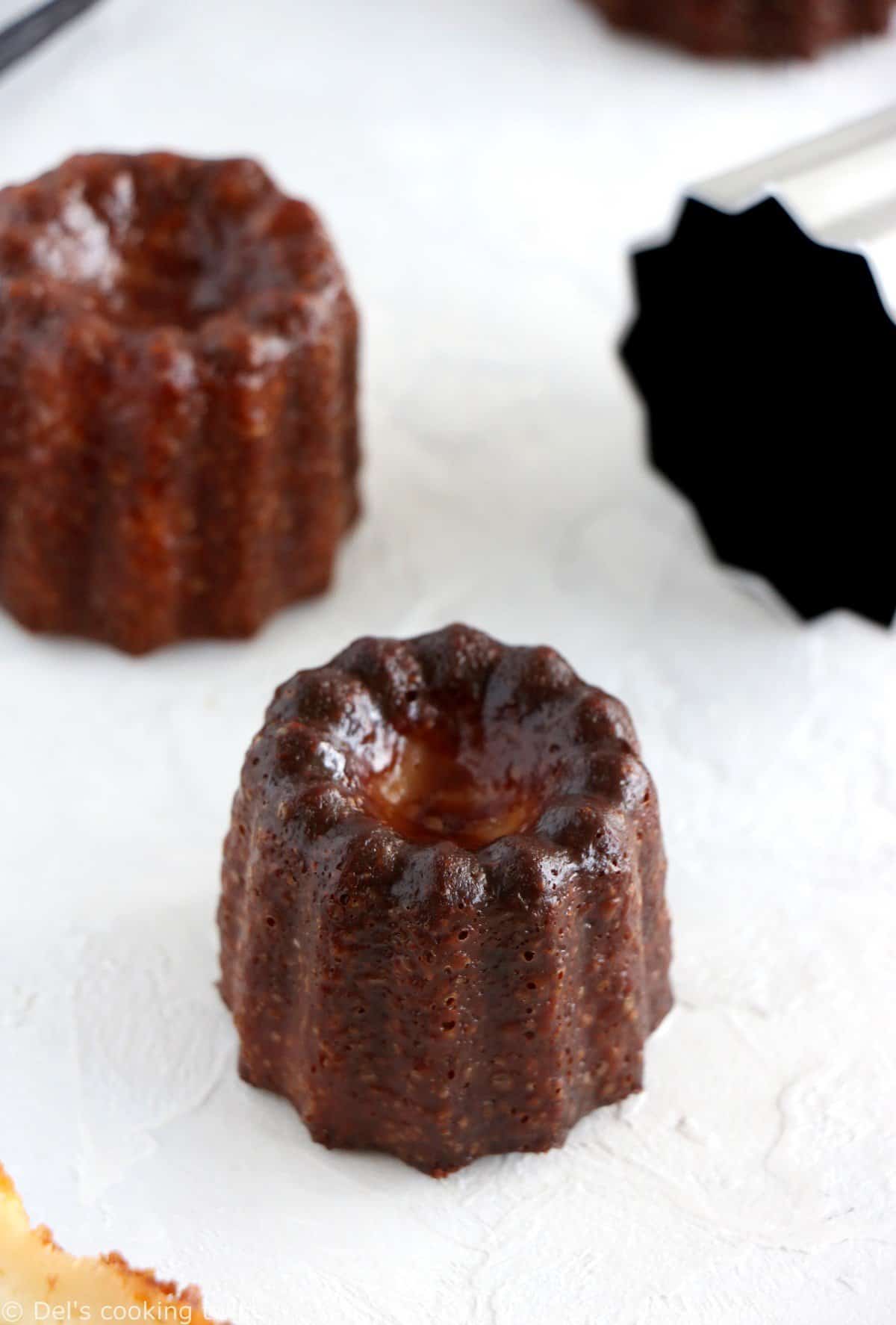
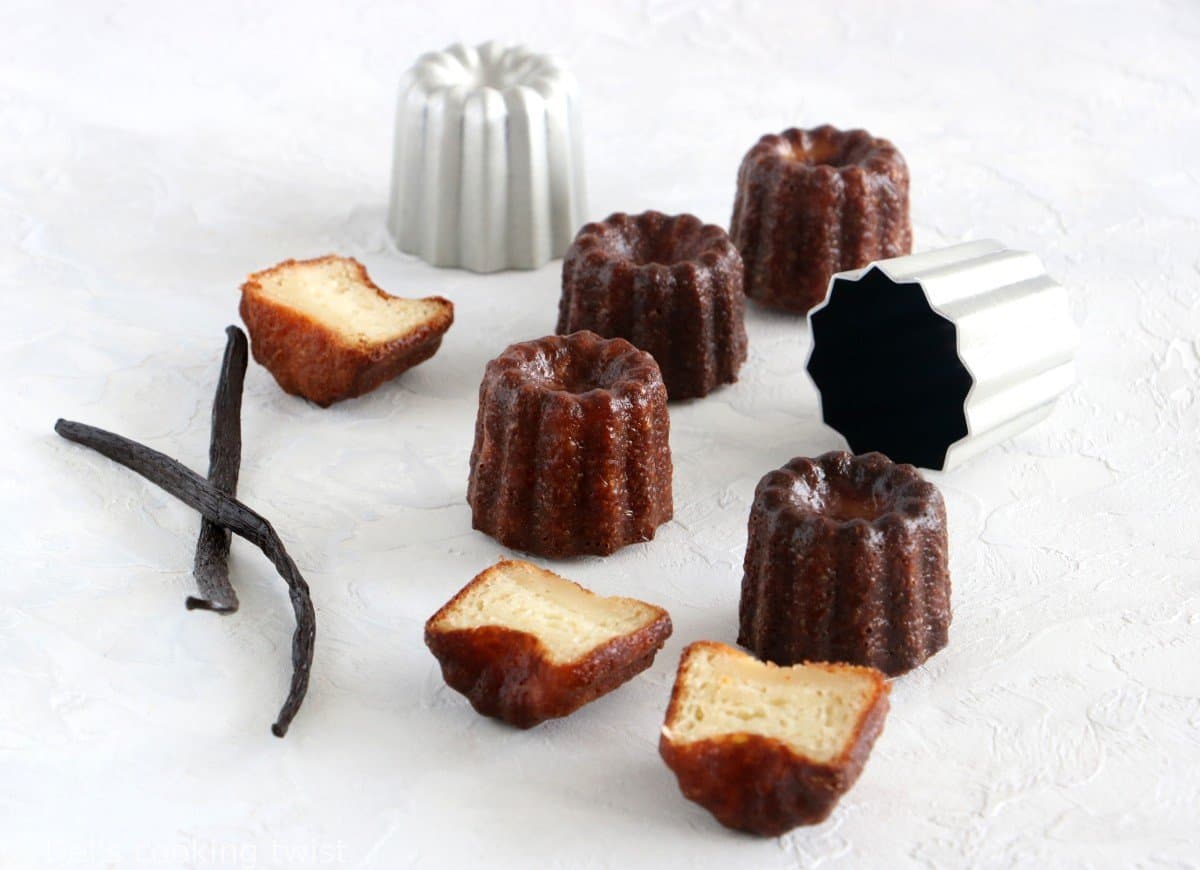
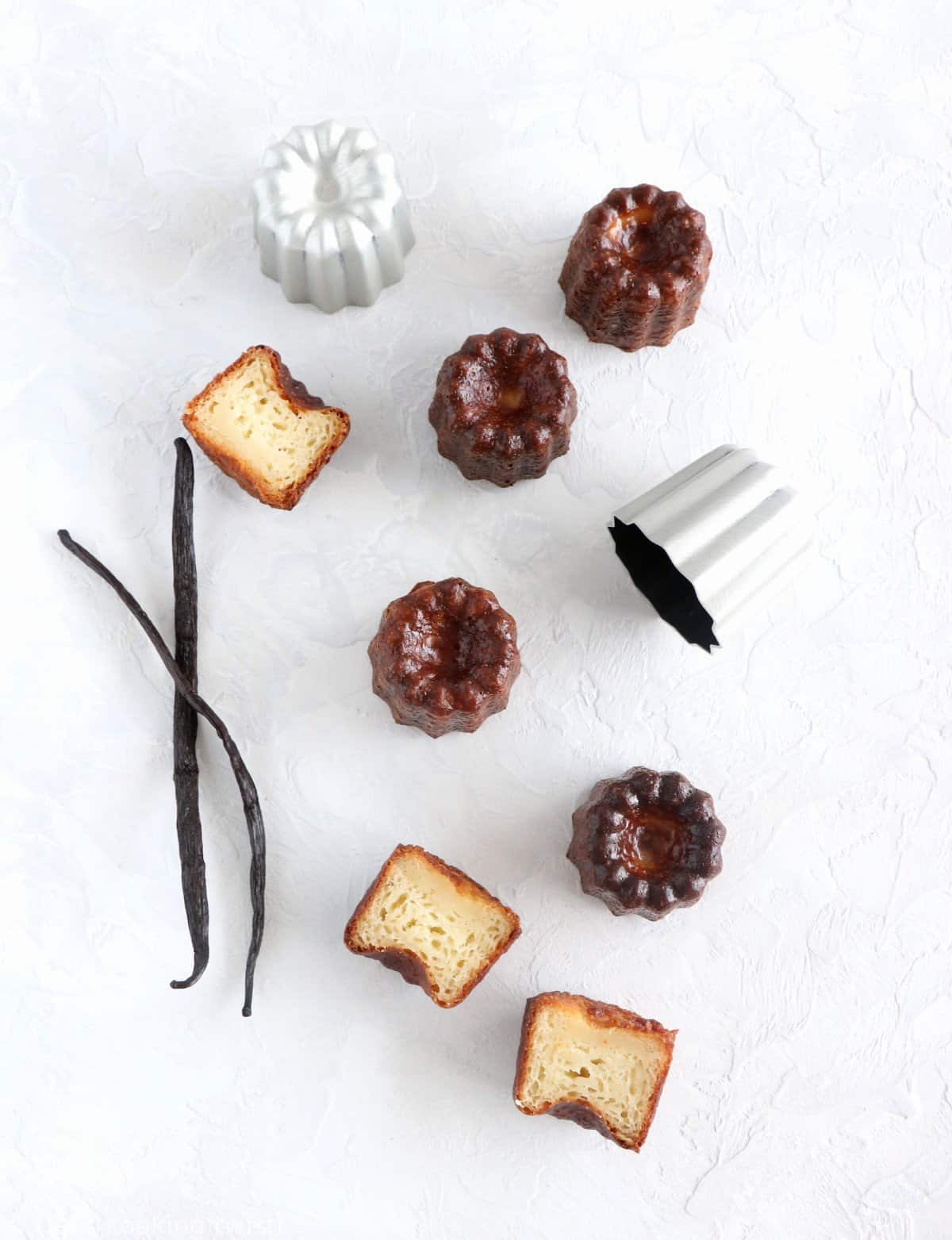
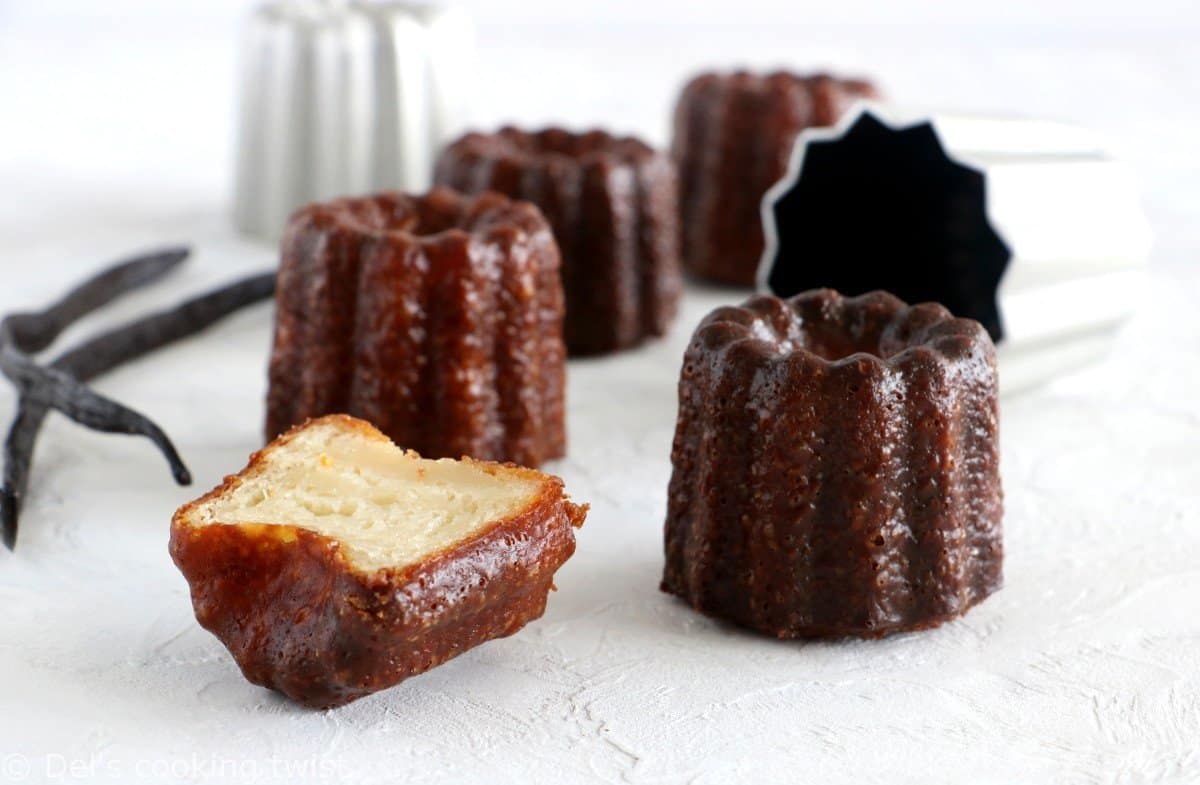




Mila
They turned out delicious. For some reason some of them had like a bump on the base. It’s like the temperature made the batter get air on one of the corners. Do you know how can I avoid this next time? We loved the flavor and the texture.
Queenie Lim
I have been baking canele for more than a year now and I have been through a lot of experimenting and troubleshooting every time I bake them. Every time I bake canele it always comes out differently even though I didn’t change any of the ingredients that I had at the first bake. I have this problem of my canele sticking inside the molder and its hard to pop out after being baked. I hope you can give me advice, answers or your thought about my concern. Thank you so much.
Sabine
Mes cannelés n’étaient pas aussi dorés puisque je n’ai qu’un moule en silicone mais en revanche ils étaient délicieux !! Mes amis qui ne connaissaient pas ont adoré !
Kiah
Hi, I am looking to make these for a desert for my college exams however I am looking for something to go with it whether that is a cream or a sauce. I wanted to keep it very traditionally French so do you know what is usually served with this in France? Thank you!!
Delphine Fortin
I would definitely go for what we call “crème anglais”, a light and runny vanilla custard.
Angel
Hi Del
Would you share where to buy the aluminium molds?
Thanks!
Delphine Fortin
Hi Angelica! It really depends where you live. I got mine at Sur La Table in the US. I hope this helps! Del
DB
I have another recipe by Donna Hay that uses 200g dark chocolate, 2 1/4 cups milk, same eggs as your recipe, 100g flour and 240g icing sugar. Then the batter is rested only for 2hrs at room temp and baked at 425°F for 10min, and 350°F for 50-55 min. Do you think this will work as well?
Delphine Fortin
I haven’t tried this version myself so I couldn’t answer to this question 🙂 Del
Anita
Hi Delphine, thanks for sharing this recipe. What would be the bake time for the mini ones?
Delphine Fortin
Hi Anita! I would aim for the same baking time but it’s always great to keep a close eye on the oven starting from 15 minutes before the end of the baking time. If in doubt, open the oven and slightly touch the top of caneles with your finger tips. If still very soft, leave them a little longer to bake. I hope this helps! Del
Carla
Bom dia!
Procurei muito essa receita. Realmente parece um segredo de estado rsrs.
Obrigada, vou testar. Parece delicioso ❤
LadyMilonguera
Je t’en piquerais volontiers un ou deux !
Delphine Fortin
N’hésite pas 😉